This post follows on from my earlier post on The Secret Book of John, possibly a Jewish pre-Christian work, as translated and annotated by Stevan Davies.
Stevan Davies’ translation of the Secret Book/Apocryphon of John is available online at The Gnostic Society Library.
The Prologue is said to be a Christian addition to an earlier non-Christian book. But what sort of Christianity interested the scribe who added this? The disciple John is said to see Jesus appearing variably as a child, an old man and a young man. I am reminded of Irenaeus’s belief that Jesus had to have been past his 50th birthday when he was crucified so he could experience all the life stages of humanity and thus be the saviour of all. One is also reminded of the letter of 1 John that addresses the “children, fathers and young men” in the church. Of related interest to me are some of the earliest Christian art forms that depict Jesus as a little child – in particular when he faces an elderly John the Baptist to be baptized. Christ crucified does not appear.
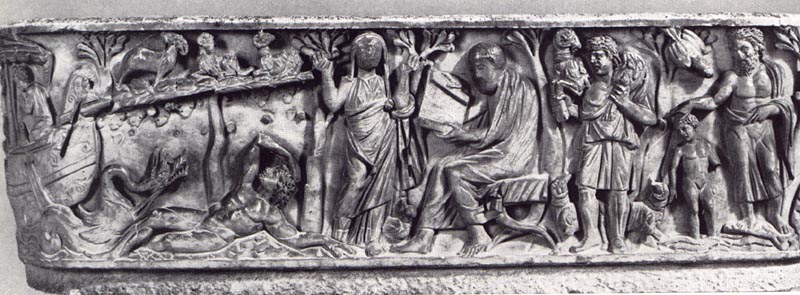 The same prologue has Jesus say “I am the Father, the Mother, the Son. I am the incorruptible Purity.” The Holy Spirit in the eastern churches was grammatically feminine and so the Holy Spirit itself came to be regarded as feminine.
The same prologue has Jesus say “I am the Father, the Mother, the Son. I am the incorruptible Purity.” The Holy Spirit in the eastern churches was grammatically feminine and so the Holy Spirit itself came to be regarded as feminine.
The Christianity that is appropriating this originally non-Christian gnostic text was one that viewed Christ as not only a discrete personality who had been crucified and risen as a saviour, but one that also accommodated gnostic-like ideas of Christ being identified in the different forms of humanity. Or perhaps it is more correct to say that the range of humanity is a representation of the divine.
But enough of my ramblings and speculative asides. Back to the gnostic myth.
The Inexpressible One
The Apocryphon begins with a lot of words explaining that words cannot describe The One [a Platonic concept] ultimate reality or deity. Though this is God it is really more than God since God is kind of an expressible entity. This “God” that is really more than our normal idea of God is beyond all being, since being implies a created order, beyond time, beyond comprehension, etc. It is the embodiment (without a mere body) of all that is good, light, happiness, etc, or actually what is “more than” or “beyond” mere goodness, light, happiness, etc.
This is not very different from how I recall God being explained to me by my father when I was a child.
Not quite what my father explained to me, though, was the idea that this incomprehensible One-ness, this Invisible Spirit, could also be termed a Virgin Spirit since it produced an offspring from its own self, without the participation of another. That leads to the origin of reality. (It is also called a Father and Holy Spirit.)
The Origin of Reality – the Image
It all started when this perfect One-ness had a self-conscious thought and “saw himself”. This self-awareness or self-image is not in itself to be identified with the inexpressible One but is another “reality” or entity that comes into existence by this act of self-consciousness. And since the One knows himself completely this “image” of himself in his “mind”, this image that is a second reality, contains everything (in image form) that is the essence of the perfect One. The difference between the two is that the mind-generated image is the image of the invisible One.
So a second god, if you like, an image of the first, is created by the mind of the first “god” coming to “see itself”. It is the first thought and is even coincidentally named First Thought.
This mental image is a second entity that visibly reflects the invisibly original One. And of course, since the first One is all that is loving and lovable, on seeing his own image of himself in his mind, his First Thought, he falls in love with it, or her.
This image, this second reality, is named Ennoia (= Thought or Insight) and/or Pronoia (= Foresight or forethought). (Davies prefers to translate the word as Providence but I prefer Foresight or Forethought. The word was common “in philosophical and psychological speculations of the time.”)
First Thought is given the name of Barbelo. It/she is the first power of the Virgin Spirit.
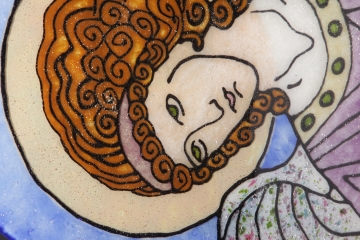
Barbelo, like all good subordinate divinities, gazes upon the supreme One or Virgin Spirit that produced her and sings her praises.
Barbelo herself now is given a host of names which may indicate an attempt by the original scribe or subsequent redactor to incorporate alternative names from elsewhere for this mythical “person”:
- Mother-Father
- First Man
- Holy-Spirit
- Thrice [i.e. superlative] Male
- Thrice Powerful
- Thrice Named
Barbelo is androgynous and “first to arise among the invisible [aeons/realms]”. She is also “the universal womb . . . before everything”.
Colossians 1:15-19 comes to Davies’ mind in the course of his commentary:
15 He is the image of the invisible God, the firstborn over all creation. 16 For by Him all things were created that are in heaven and that are on earth, visible and invisible, whether thrones or dominions or principalities or powers. All things were created through Him and for Him. 17 And He is before all things, and in Him all things consist. 18 And He is the head of the body, the church, who is the beginning, the firstborn from the dead, that in all things He may have the preeminence. 19 For it pleased the Father that in Him all the fullness should dwell
Primary Structures of the Divine Mind – the Fullness
The next stage of the myth sees Barbelo (also understood to be Mother and Forethought) foresees the things she is going to need so she asks her invisible One-ness, from whom she herself came into being, for four things. Like any indulgent parent the Virgin Spirit One-ness agreed:
- Foreknowledge
- Incorruptibility
- Everlasting Life
- Truth
Now with these four standing beside her this image of the One is complete. That is, it is now the “fullness” or pleroma. The Father or Virgin Spirit or One-ness is imagining himself, imaging himself, and creating a complete image, an image that expresses his “fullness”. That image is a five-faceted entity, Barbelo or First Thought united harmoniously with the above four gifts to consist of a five-faceted image of the Invisible Spirit.
Now bring on the drum roll. This “fivefold realm of the Father”, this fullness of a five-aspected (mental) image of the One, is the First Man.
Secondary Structures of the Divine Mind — the Son
Now the Son is born, the first-begotten of both the Invisible Father and Virgin Spirit and his First Thought or Image (Barbelo, who is also the First Man begotten of the Father; so mere earthlings like us definitely do not want to take the gender attributes of these characters too literally unless we find a herb to assist with picturing a pair of androgynous beings . . . . )
It all started with just one look, that glance of love when the One-ness shot a sperm of light from his eye into Barbelo. From Barbelo there was thus born “a spark of light”. Think of the gospels of John and Thomas declaring that Jesus is the Light.
This Light was the first and “only begotten” of the One-ness and his Image. Think again of the gospel of John where Jesus is said to be the only-begotten of the Father.
Now this only-begotten Son was “anointed” (cf Christos or Christ, meaning anointed one) with Goodness (cf. Chrestotes) by the Invisible Spirit/Father/Virgin Spirit/One-ness. By the pouring out (“christ-ening”) of this chrestotes the Son was made perfect.
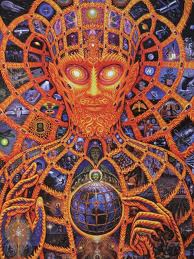
Now this Son, like his “Mother” before him, asked his invisible Spirit “Father” for some gifts. As the Anointed One (Christ) he received the gift of Goodness, but like the Scarecrow in Wizard of Oz he also wanted Mind (Nous) as a companion.
When the Invisible Spirit consented Mind came into being. It stood by the Anointed and glorified the Spirit and Barbelo. These beings came into existence through silence and thought.
Next came Will and Word.
So as the Mother Barbelo (and First Man) expressed the fullness of God as a five-fold image so the Son likewise was a five-fold unity with his four companions.
Tertiary Structures of the Divine Mind – Humanity’s Cosmic Origin
Incomprehensibly (as is no doubt appropriate at this level of existence — or an eclectic carry-over from another version of this myth) this Son and Christ is also known as the Divine Autogenes (self-begotten).
Now the Invisible Spirit One-ness gave this Light offspring of his, his Christ and only Son, all power, all authority, over everything.
Here Davies identifies a passage as a later Christian addition:
He is called by the highest name of all. That name will be told only to those who are worthy to hear it.
From this Son/Christ/Self-begotten was above all things came four more lights or angelic-like beings and twelve aeons or realms to be with him. In ‘reality’ they are all mythologized aspects of the divine mind.
The first of these four lights was Harmozel (= “Standing Light”?) and accompanying him were
- Grace
- Truth
- Form
The second was Oriel (= “God’s Light”), with
- Perception
- Memory
- Conceptualization
The third was Daveithai (= “of David”?) with
- Love
- Idea
- Understanding
And finally Eleleth (= “Morning Star”?) with
- Peace
- Wisdom
- Perfection
All of these are in reality aspects or “mental potentials” of the Son.
Then from Foreknowledge (Mother) and the intent of the Invisible Spirit (Father) and the will of the Autogenes (Son) came forth “the perfect human“, a realm or aeon in the mind of God.
The Invisible Spirit named him Adamas and placed him over the first realm or aeon alongside Christ and his first-light Harmozel and its three powers.
Adamas was inferior to all of these, of course, so gave praise and glory to them all, acknowledging he owed his existence to them, the perfect triple power of Father-Mother-Son.
Adamas’s son was Seth and he was appointed over the second aeon or realm along with Oriel.
The children of Seth were set alongside the third light Daveithai.
And all those other poor souls who remained ignorant and unrepentant until the time to come for their eventual salvation were paired with Eleleth.
Thus the entire human race was created as a prototype, as it were, in the cosmic dimension even before the world has yet been created.
A Crisis That Became the World — The Fall
The gnostic Fall was in the mind of God. Actually it was a part of Epinoia or the First Thought or Image of God that sought to think for itself — apart from God — that caused all the trouble. (Independent thinking so often gets a bad press among religious groups.)
Without informing the Invisible Spirit that realm/aeon within Epinoia known as Sophia (= Wisdom) decided to self-generate (I guess this would be a perverted virgin birth) a thought of her own, her own image as the Invisible One had created an image of himself by his own self-awareness.
But she was a lesser order of being than the Invisible One, yet was powerful enough for her thoughts to produce a creation, and so out of her independent thought that did not involve God/the Invisible Spirit came a monstrosity. It was a hideous beast, the body of a dragon and head of a lion and eyes flashing lightning.
Fearfully shocked, Sophia threw the creature out from the presence of the immortals and surrounded it with a great cloud to hide it. A gatekeeping throne was placed within that cloud.
The name of the creature was Yaldabaoth.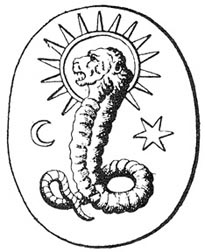
Yaldabaoth inherited creative powers from his mother, Sophia, moved away from his birthplace and became a chief ruler (archon) over realms or aeons that he himself would bring into being by his own thoughts.
Here is the beginning of what is soon to become the material world. For the first time we have a physical shape ascribed to a creation, and clouds and a throne appearing. But the creations of Yaldabaoth will be poor artificial imitations of what has been produced before. Literal physicality, however, is yet to appear.
The Fashioning of This World
Yaldabaoth mates with his “Thoughtlessness” (compare Thought of his mother) to produce ruling powers and authorities that are a very poor imitation of the ruling powers above:
- Athoth (i.e. Egypt’s god of wisdom, Thoth)
- Harmas (the Greek god Hermes)
- Kalilaoumbri
- Yabel (Yahweh + Baal?)
- Adonai (Lord)
- Cain
- Abel
These gods (or false gods) rule the seven spheres of heaven (Saturn, Jupiter, Mars, Venus, Mercury, Sun, Moon respectively) above the earth.
Five more complete the number twelve. These five rule the five depths of the abyss below the earth.
- Abrisene
- Yobel
- Armupiel
- Melcheir-adonein (= “king-lord”?)
- Belias (= Belial, ruler of Hades)
Yaldabaoth was able to share a portion of his fire with these twelve creations but he shared none of the light he had inherited from his mother.
Yaldabaoth is then said to have three names. First there is Yaldabaoth itself. Then there is Saklas, which was a Jewish name for Satan meaning Fool. Another was Samael, meaning “blind god”.
And in his arrogant ignorance he blasphemously boasted:
I am God and there is no God but me!
After creating a host more demons he again boasted:
I am a jealous God and there is no God but me!
Demons now multiply. Each of the 12 authorities Yaldabaoth brought into being gives birth to seven demons and each of these 49 gives birth to six more so there are 365. Each day of the week has its demon. They have variously animal-shaped faces. Yaldabaoth can turn any face he wants to.
But the power within Yaldabaoth contains some good, too, since it is inherited from the perfect powers above him, after all. This power within him thus also creates some good beings to mark or pair against certain of his evil creations.
So Goodness is paired with Athoth, etc. The other good powers are Providence, Divinity, Lordship, Kingdom, Zeal, Understanding.
Yaldabaoth has thus unwittingly also created the seeds of his own ultimate destruction.
Sophia Repents
Sophia meanwhile felt “dimmed” having lost some of her former light. She was forgetful, ignorant and ashamed. She could no longer ascend to her former height but swayed back and forth in repentant attitude. But alone she could not be restored. The fullness of divine realms heard her prayer and interceded for her to the Invisible One. Her father took pity and poured out upon her his Holy Spirit, thus graciously restoring her — almost.
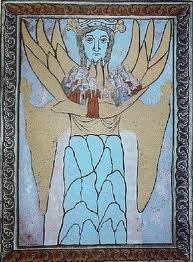
She was kept in the ninth sphere or heaven to await her full restoration. This ninth was the lowest of spheres occupied by all the other immaterial entities above.
Below was the eighth, the sphere that contained the fixed stars — and Yaldabaoth.
Below this were the seven spheres of the planets, etc, as noted above.
Humanity Begins — Creation of Adam
A great cry came from the highest spheres above Yaldabaoth declaring:
The Man exists! And the Son of Man!
This was, of course, the First Man, the fullness of the First Thought, the Image of the Invisible Spirit, as explained above. And the Son of Man refers to the Christ, the only begotten Son, also explained above.
Yaldabaoth looked up and saw illuminated in waters above him this First Man, the Fullness of the Image of the One.
It’s a dramatic moment. Realms quake and depths are moved.
Yaldabaoth is so overcome he decides to create another man in the image of this one so gloriously illuminated above him. What light he has still within him he will inject into this man in hopes that his man, like the one above, will be able to illuminate his world.
All the demonic hosts join in since they had looked up and seen the remarkable image for themselves. Each demon has his or her own speciality and contributes this to the making of this man in the lower realms.
So they made a likeness of that perfect First Man and said,
Let us call him Adam, so that his name will give us the power of light.
The Construction of the Human Body
So all of Yaldabaoth’s demons (even the few good ones) contributed aspects and were assigned rulership over the respective parts. I will not repeat the details that remind one of the endless genealogies in the Old Testament and the chapters full of rings and curtains and poles enumerated in the Tabernacle. No doubt ancient “doctors and exorcising magicians” found the list authoritative and professionally valuable.
Once made, Adam lay there, motionless, inanimate, like Frankenstein’s monster before it was charged with life.
Meanwhile Yaldabaoth’s mother, Sophia, showed right behaviour by no longer plotting alone but seeking out the help of her father, the Invisible One, to restore to her the power she had given to Yaldabaoth. Yaldabaoth does not yet realize he has just created the one that will be his ruin.
But at this stage the body is psychic in nature and not yet encased or imprisoned in a literal physical substance.
Yaldabaoth Deceived — Adam is cast down to earth
The Invisible Virgin Spirit heard Sophia’s plea and responded by sending down to Yaldabaoth the five-lights of the Christ-Son — Christ with Harmozel, Oriel, Daveithai and Elelith — disguised as counsellors for this demiurge.
Blow some of your Spirit into the man’s face, then his body will rise up,
they advised.
So the spirit Yaldabaoth had inherited from his mother, Sophia, blew into Adam. Adam then at last moved with life, grew powerful and shone with light. He stood “naked of evil” (and by implication not ashamed). But most terrifying of all for these demonic powers who had contributed to his making was that he was more intelligent and more understanding than all of them, even moreso than Yaldabaoth himself.
So acting like the wicked step-sisters and step-mothers of fairy tales or the envious priests of the gospels they seized hold of Adam and cast him down to the lowest depths of Madonna’s material world, apparently the realm ruled by Belias/Belial.
(This would seem to me to mean Adam bypassed earth itself, but I must recall the point I passed on from Stevan Davies in the previous post that one must not expect consistency in the world of myth. And by the way, I mention fairy tales and Frankenstein’s creature deliberately. The myth’s parts resonate with the human psyche timelessly — not unlike the more orthodox Christian myth either and which itself echoes many of the motifs in this Jewish gnostic myth.)
The Beginning of Salvation
The Image of the One, the Mother-Father of whom Sophia was a part, looked down with compassion upon the Mother’s power (spirit) that had been relinquished by Yaldabaoth when he blew it into Adam. (It is the spirit, not the flesh, that is the ‘real man’.)
This Mother-Father/Fullness of God’s Mind realized that the chief ruler Yaldabaoth’s demons might yet overpower Adam so he/she lovingly sent a companion, a help, to allow Adam to “recall” all where he had come from and the way back to where he belonged. This companion was Epinoia or Light-filled Epinoia, a word meaning “reflection, conceptualization, intuition, coming to understand through creative consciousness”.
Epinoia was called Life, presumably because she was the way to Life. She was hidden inside Adam so the rulers of the world would not see her as she worked to repair the damage that had been done to Adam. Recall Paul’s words, “We have the mind of Christ” (1 Cor. 2:16). One also thinks of the many motifs in the Gospel and epistles of John.
The demons are now fighting for their survival.
Sophia’s power inherited by Yaldabaoth was what sustained the very existence of the demonic hosts. Now the power was in Adam and through his creative consciousness, his reflective powers (Epinoia), he could recollect his true home and learn the way back there. The power sustaining the demons would return and the demonic powers and authorities would cease to exist.
To secure their future the demons did all they could to keep Adam from ever being cognizant of spiritual things so surrounded him with matter, both his body and his world. This matter became in effect a prison of the real inner man.
The psychic Adam is entombed in physical matter (earth, water, fire, wind, which are matter, darkness, desire and artificial spirit) by the gods of this world.
Adam in Yaldabaoth’s Paradise
These rulers took Adam and place him in a paradise and told him to eat of everything freely except for one tree.
There were, of course, two trees there. The first was the Tree of Life, but the life it offered was one of hatred, deception and death. Its leaves were bitter, its fruit poisonous, etc.
Then there was the Tree of Knowledge of Good and Evil whose real fruit was the light-filled Epinoia (the saving reflection hidden within Adam). And it was this one that Yaldabaoth forbade Adam to eat.
(We see here evidence, I think, that the Apocryphon is an awkward attempt to collate several versions of the myth. Adam had already been injected with Epinoia according to one myth; but another that attempted to rewrite Genesis introduces Epinoia after Adam was placed in Paradise.)
Yaldabaoth nonetheless could see that Adam had disobediently partaken of the fruit Epinoia from the Tree of Knowledge of Good and Evil. To prevent him from uniting with the highest powers and leaving Yaldabaoth and his world robbed of their powers Yaldabaoth punished Adam by making him forgetful.
Think here of the Greek myth of the waters of Lethe.
Woman Comes into Being
The chief ruler Yaldabaoth further attempted to remove Epinoia from Adam through his rib-cage but, imperfect surgeon that he was, left part of it behind. He had sufficient, however, around which to mould a physical form that showed Epinoia’s womanly shape. As Adam had been modeled on the primordial First Man Eve was modeled on the Fullness/Pleroma in the Epinoia.
This newly created woman was of immediate and overpowering interest to Adam’s mind. He recognized in her the light-filled Epinoia; she “lifted a veil that dulled his mind”. One look and she “sobered him up from the dark drunkenness”. She was his “own counterpart”.
Adam would be saved by uniting with Epinoia, the true Eve or mother of all living.
When Yaldabaoth discovered this love affair he cursed the earth and cast them out of Paradise and clothed them in heavy darkness.
A curious detail follows where Yaldabaoth rapes Eve and conceives two sons from her, Cain and Abel. They were given control over natural elements in order to rule the tomb.
The Children of Seth Populate the World
Epinoia or Eve is also known as Foreknowledge, and Adam has intercourse with her as Foreknowledge. Their first son is like, or modeled upon, the Son of Man (also the Anointed One, Christ) — as known in the higher realms. His name is Seth.
The Mother sent down her own Spirit, or image of herself and model of the higher realm, into Seth. Seth thus possessed the artificial spirit from Yaldabaoth and the true Spirit from the mother. This Spirit is variously known as Epinoia, Prognosis, Foresight/Providence, Sophia (=Wisdom).
Thus Seth contained both the false spirit of Yaldabaoth and the model of the divine realms, the true spirit. And since Seth was destined to become the father of all humanity, all humanity likewise is imbued with the two spirits.
Meanwhile Yaldabaoth continues to have the “Sethians” drink from the waters of forgetfulness and remain ignorant of their true origin and destiny. He wants to keep them in a condition of sleep or drunkenness.
But his efforts are being foiled by the true Spirit from the holy realms above descending upon the children of Seth and healing them, and thus “restoring complete holiness to the fullness of God.”
Thus we have a suitable ending with a promise of salvation for all.
The End?
But we know a Gospel of John would not be complete without a few more added endings, and this Apocryphon is no exception. But I will leave those added chapters for those interested to read in the online translation.
Meanwhile, it is difficult not to want to read again some of the canonical texts with the myth of this Apocryphon in mind. Beginning with the final speeches of Jesus in the Gospel of John itself. There are also significant doorways here that lead to other Christ-mythical hypotheses but I’ll not venture into any of those for now.
The point of this exercise has been primarily to help me come to grips with the contents of this myth (I was always told to take notes when trying to learn something) and in the process share the basic contents with others who may, as I have experienced, find an initial reading of the Apocryphon sometimes confusing. Stevan Davies’ annotated translation is most helpful and of course I have only captured a portion of his explanations here.
If you enjoyed this post, please consider donating to Vridar. Thanks!

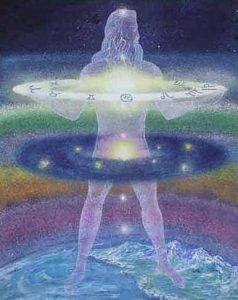
Thank you for your notes on the complex system of emanations in this myth!
Neil:
“This mental image is a second entity that visibly reflects the invisibly original One. And of course, since the first One is all that is loving and lovable, on seeing his own image of himself in his mind, his First Thought, he falls in love with it, or her.”
“Like any indulgent parent the Virgin Spirit One-ness agreed:”
Just an initial thought, Neil. I am enjoying your editorializing, but for the sake of nitpicking, we cannot know whether the original ineffable Invisible Spirit is loving or lovable, let alone indulgent. Obviously, this is not a modern traditional Christian godbeing of Love. Of course like all curious humans who try to get a handle on the unknowable, the Gnostics worked with images they could conceptualize or rather images of reality they thought had been made known to them, but they did so through myth, emphasizing that the Invisible Spirit, so-named, did not possess various attributes, but rather bestowed them.
So, even though we read a myth that upon seeing the image the Father is “enamored” (Davies) or “puts desire” (Wisse) or exercises “will” or “desire” (Layton), we are still left wondering why this image happens (and perhaps rightly so that we do not know, considering the original Invisible Spirit is beyond our conception and possibly beyond our need for a reason or purpose). Bentley Layton expresses his thoughts about this in The Gnostic Scriptures, p. 30, Footnote j.:
Guilty as charged. Your criticism about “loving and lovable” did cross my mind as I wrote it but the temptation to keep it was just too strong, your Honour. For a lenient sentence I plead that I don’t expect anyone to take such flippancy as authoritative but may be prompted to turn to the “original” (though redacted, edited, translated etc) and read it with a clearer understanding on its own terms. Besides, the ineffable One-ness that cannot be described or comprehended could never have mere base emotions of love. Anything it possessed was obviously something way beyond love. How easy it is to resort to mere mythology to describe such incomprehensibility.
Base emotions of love? Love has many forms, certainly not all base, if in the myth love (along with intelligence and ideal form) shows up with the third Light, Daveithai. How that ultimately does or does not relate to the “One-ness” is only for the “One-ness” to know.
“Mere mythology”, sir? Ah, consider the depth of experiential meaning capable of being expressed through various imageries by way of those “mental or psychological processes” you mention in your first post. 😉
A bit of a side point: the fact that “The disciple John is said to see Jesus appearing variably as a child, an old man and a young man” reminds me of Parvus’ thoughts on the Gospel of John in light of Apelles and Philumena (http://vridar.org/2012/08/23/is-paul-the-beloved-disciple/). The latter apparently received revelations from a spirit who was “dressed as a boy and sometimes stated he was Christ, sometimes Paul” (moreover, in view of Parvus’ later work on the Simonian Origin, it may be that Christ and Paul were originally the same anyway; who knows what Philumena would have thought the relationship between the two to have been).
Whether or not we accept Parvus’ hypotheses, I wonder if there is some connection between the Apocryphon of John and the naming of canonical John and the rest of the Johannine literature. We seem to be back in “who knows?” territory, because we have no way of knowing when the name John became attached to either work. The existing version of the Apocryphon specifies John the son of Zebedee, although Davies believes “these are the sons of Zebedee” to be a late addition, so it might once have been a different John intended (even John the Baptist, perhaps). The canonical Gospel of John, of course, never gives its author’s name. Perhaps the two works were once in use in the same community.
I wonder if there’s any evidence that indicate that Apelles knew the Apocryphon.
Greg,
AFAIK, there is no evidence Apelles knew the Apocryphon. But if, as Davies holds, its prologue is a Christian addition to an earlier non-Christian work, perhaps the Christian interpolator knew Apelles’ gospel.
Entirely possible. I’m trying to figure out how the name John became attached to the Gospel of John. In the case of the Apocryphon of John, it appears that someone added a narrative frame at the beginning of the story attributing it to a particular apostle, likely with the intention of boosting its Christian credibility. The Gospel of John is a slightly odder situation, because it’s text does not attribute it to John at all. As you examined in the article I mentioned, John does have a narrative frame linking it to one of the apostles, but that apostle was either unnamed all along or the name was subsequently redacted.
Of course, the names of all four canonical gospels are mysterious, but I find John particularly interesting in part because there are also the Johannine epistles, which appear to be related. There is no “Markan literature”, “Matthean literature”, or “Lucan literate” the way there is a Johannine literature (well, I suppose Luke+Acts constitutes a Lucan literature).
Anyway, I could imagine a scenario where the name John was added to the text of the Apocryphon of John and then subsequently the Apocryphon came to be associated with the 4th gospel, and then the name John was transferred onto the gospel. But, if the way it happened was the other way around, then it still leaves unclear why the Gospel of John is called John in the first place. Totally possible and probably probable, but question marks remain.
In a more original version, the serpent, as explained by Jean Magne, was the true revealer. The heresy of the Perates, as described by Hippolytos, still said that the serpent reappeared in the times of Herod as Jesus.
The later Christian interpolator was most embarrassed and invented an eagle who is not mentioned in the parallel section of the Book of Genesis, just to distance Jesus from the serpent, who had become by then the primordial supernatural evil for Christians and Jews.
Magne reports that the concept of the adulterous conception of Eve is reflected in the Rabbinic writings, such as the Palestinian Targuma (of Genesis 4:1 and 5:3) and the Pirke of Rabbi Eliezer.
For Eleleth: El Elyon was the chieftain of the pantheon of pre-Ezraite polytheism.
For Harmozel: Ahura Mazda, the supreme Zoroastrian deity
Hi, I’m studying this intently. In your text you say: Demons now multiply. Each of the 12 authorities Yaldabaoth brought into being gives birth to seven demons and each of these 49 gives birth to six more so there are 365. Each day of the week has its demon. They have variously animal shaped faces. Yaldabaoth can turn any face he wants to. I don’t know where I’m gong wrong with my maths but I cannot, from the words given, get to 365. Can you or perhaps another reader please guide me here. Thanks in anticipation
I’ve checked three other translations and their notes. Different versions of the Apocryphon differ somewhat at this point. I couldn’t make the maths work in any of them, either for a 360 day or 365 day calendar. All six known versions are translations from the Greek and we do not know how many times the text or texts were copied before reaching the forms they have been recovered in.
If you compare what we have of the Greek Gospel of Thomas to the same sections of the Coptic version, there are considerable differences. This maths problem may have come about in the copying/translation/redaction history before the Apocryphon got to us or the maths may not have made sense in the first place. We don’t and can’t know. I don’t think it matters to the layman; this is a very niche area of study, so don’t get hung up about it.
Hi and thanks for your response. I’m not getting up about the matter (LOL), I was just hoping to determine a completion in the narrative, as I build up the cosmogony from the text. I would have liked to have seen a thorough relating of Powers and Authorities to days, months, and son on. Still, it’s a shame that the copied details were not more thorough (if that is the reason). Again, many thanks.
..getting hung up, my keyboard should have said…….:¬(
Looking through Meyer’s translation the powers, principalities, angels, demons and whatnot are assigned to different things in great detail. there is one for the big toe and one for wetness for instance. As to the calendar, it only goes as far as assigning entities to the days of the week derived, it seems, from aspects of Yahweh.
Thanks. I’ve just found meyer’s translation at gnosis.org. I’ll have a read through. Cheers.
Glad I could help, catch yah!
The most interesting thing for me about the Apocryphon of John is the the Pharisee’s question. He is unaware of a major kerfuffle in Jerusalem ending in a crucifixion! Neither is John, who it seems is only aware of an ascension. We are in the fourth century here discussing a revered text apparently sequestered from a monastery library. The Jesus here is clearly an ascending descending deity. What pretzel like twisting derives that from a real human original?